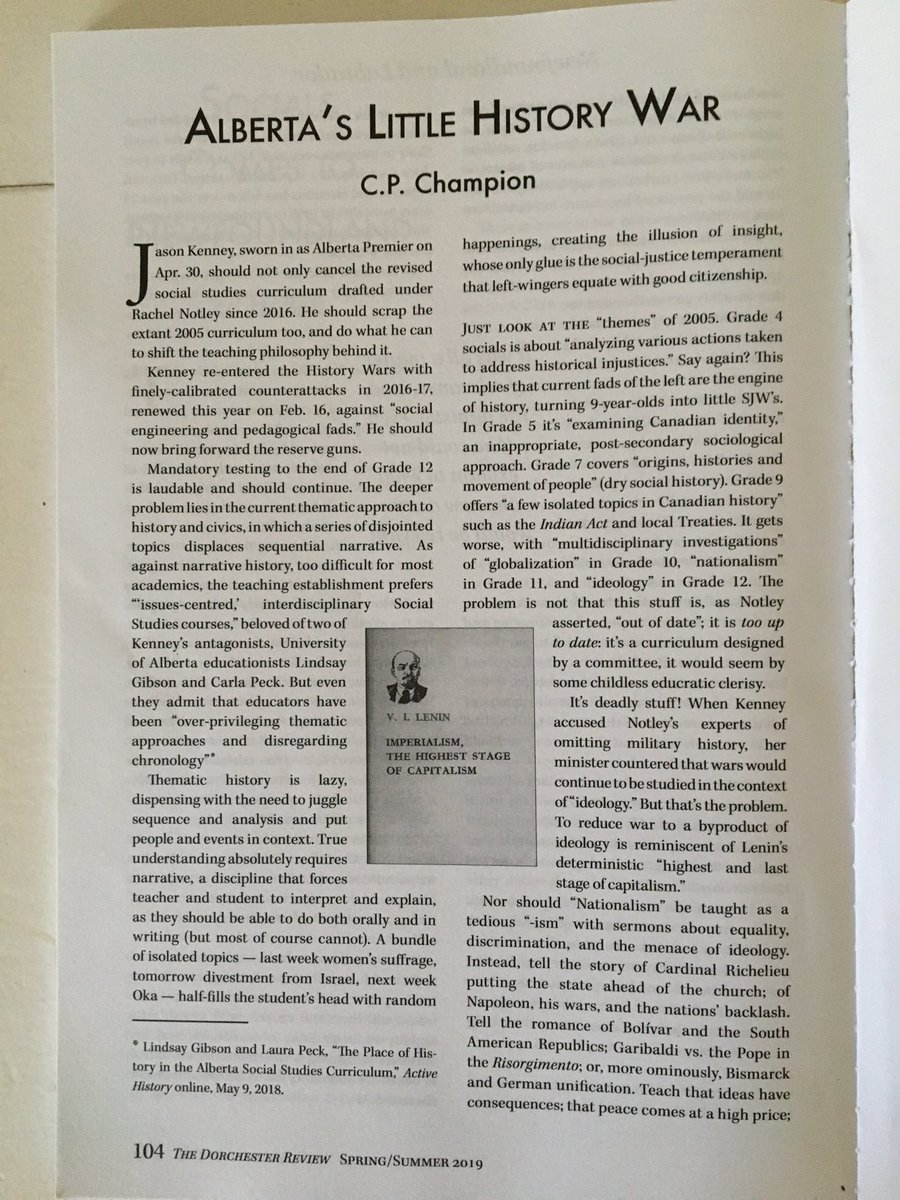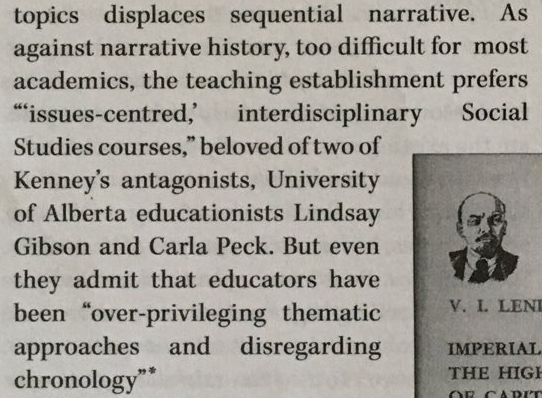
Given the proliferation of articles about #socialstudies teachers using racist learning resources and assignments I thought I’d write a tweet thread about selecting learning resources for teaching #socialstudies and #history
cbc.ca/news/canada/br…
cbc.ca/news/canada/br…
/1
cbc.ca/news/canada/br…
cbc.ca/news/canada/br…
/1
Studies provide many e.g.'s of omissions, falsehoods, mistruths, generalizations, and stereotypes in textbooks.
Increasingly, teachers are buying & selling classroom resources on for-profit educational sites that do not adequately vet their materials. slate.com/technology/202…
/2
Increasingly, teachers are buying & selling classroom resources on for-profit educational sites that do not adequately vet their materials. slate.com/technology/202…
/2
Most #Canadian Ministries of Education no longer authorize learning resources and there is no process or system in place to vet and review learning resources for teaching #socialstudies and #history
Basically, it's up to the teacher to select learning resources
/3
Basically, it's up to the teacher to select learning resources
/3
In Canada, many K-7 #history and #socialstudies teachers do not have a background in history & the social sciences, and have had little training in teaching #socialstudies and #history.
Given this situation, I'm surprised there haven't been more incidents reported on SM.
/4
Given this situation, I'm surprised there haven't been more incidents reported on SM.
/4
Teachers aren't passive users of materials who must follow the resource creators’ intentions, but are active & critical users.
The challenge: How to view textbooks & other resources not as givens, but as potential opportunities to utilize only if they serve our purposes?
/5
The challenge: How to view textbooks & other resources not as givens, but as potential opportunities to utilize only if they serve our purposes?
/5
If we look upon resources as opportunities to be activated, then racist & flawed materials are a problem if teachers aren’t aware of its shortcomings and uses them unknowingly.
/6
/6
That being said, all learning resources require scrutiny.
We can't presume that “good” materials can be used without vetting. All resources have been created for a particular purpose & are influenced by the creators’ gender, race, values, background, & experiences.
/7
We can't presume that “good” materials can be used without vetting. All resources have been created for a particular purpose & are influenced by the creators’ gender, race, values, background, & experiences.
/7
Diverse digital, physical, and human resources can be used to teach almost every topic in the #socialstudies curriculum.
The challenge is not the absence of possibilities, but knowing where to locate suitable resources and find the time to access and review them.
/8
The challenge is not the absence of possibilities, but knowing where to locate suitable resources and find the time to access and review them.
/8

Two Principles for Building Diversity of Resources.
1. Accommodating diverse student needs & interests.
Identifying and differentiating resources that allow all students to learn, especially those with diverse abilities and exceptionalities.
/9
1. Accommodating diverse student needs & interests.
Identifying and differentiating resources that allow all students to learn, especially those with diverse abilities and exceptionalities.
/9
2. Embedding varied perspectives and versions. Ensure that a suitable range of perspectives is made available to students, particularly those that feature the voices and perspectives of people often ignored or excluded.
/10
/10
Key Idea: The effectiveness of a resource depends on the purpose for which it is being used.
The purpose for the learning activity should drive the selection and use of the resource rather than letting the resource determine the learning.
/11
The purpose for the learning activity should drive the selection and use of the resource rather than letting the resource determine the learning.
/11
Two strategies to help us be goal-driven, not resource-driven
1. Adapt not adopt.
2. Teach against the resource
/12
1. Adapt not adopt.
2. Teach against the resource
/12
1. Adapt not adopt
No resource will match our goals & the our students' needs perfectly, thus every resource requires some modification before it's used.
The ? we should ask for every resource: “How can I adapt it to better align it with my goals & the students I teach?”
/13
No resource will match our goals & the our students' needs perfectly, thus every resource requires some modification before it's used.
The ? we should ask for every resource: “How can I adapt it to better align it with my goals & the students I teach?”
/13
2. Teach against the resource
Invite students to challenge & revise resources to make them more accessible, accurate, or inclusive.
/14
Invite students to challenge & revise resources to make them more accessible, accurate, or inclusive.
/14

Every resource needs to be reviewed to decide whether it meets the intended purposes, and if it is used, how it can be adapted and challenged so students are aware of its shortcomings.
/15
/15
For e.g this popular grade 3 workbook was pulled from bookstore shelves because several passages (like the one below) inaccurately described the history of First Nations-settler relations.
cbc.ca/news/canada/to…
/16
cbc.ca/news/canada/to…
/16

Used unknowingly this resource propagates inaccurate & harmful (mis)understandings, but if teachers are aware of this issue, they could "teach against" the workbook, & provide students with resources that challenge this interpretation & invite students to revise/rewrite it.
/17
/17
Lastly, we need to review all the resources we use in a social studies course or unit for patterns of exclusion and stereotypical representation using the following criteria:
/18
/18

• • •
Missing some Tweet in this thread? You can try to
force a refresh








